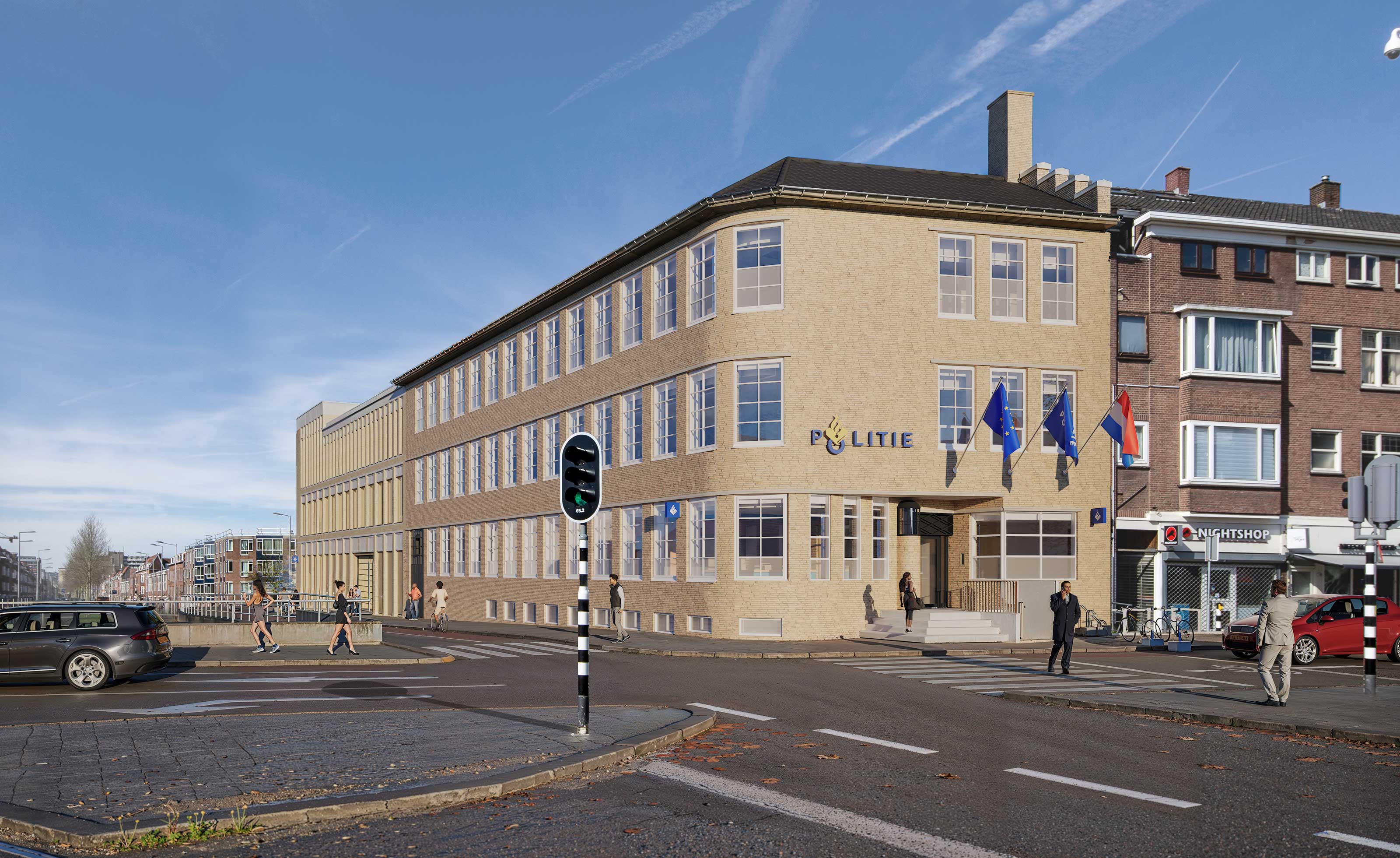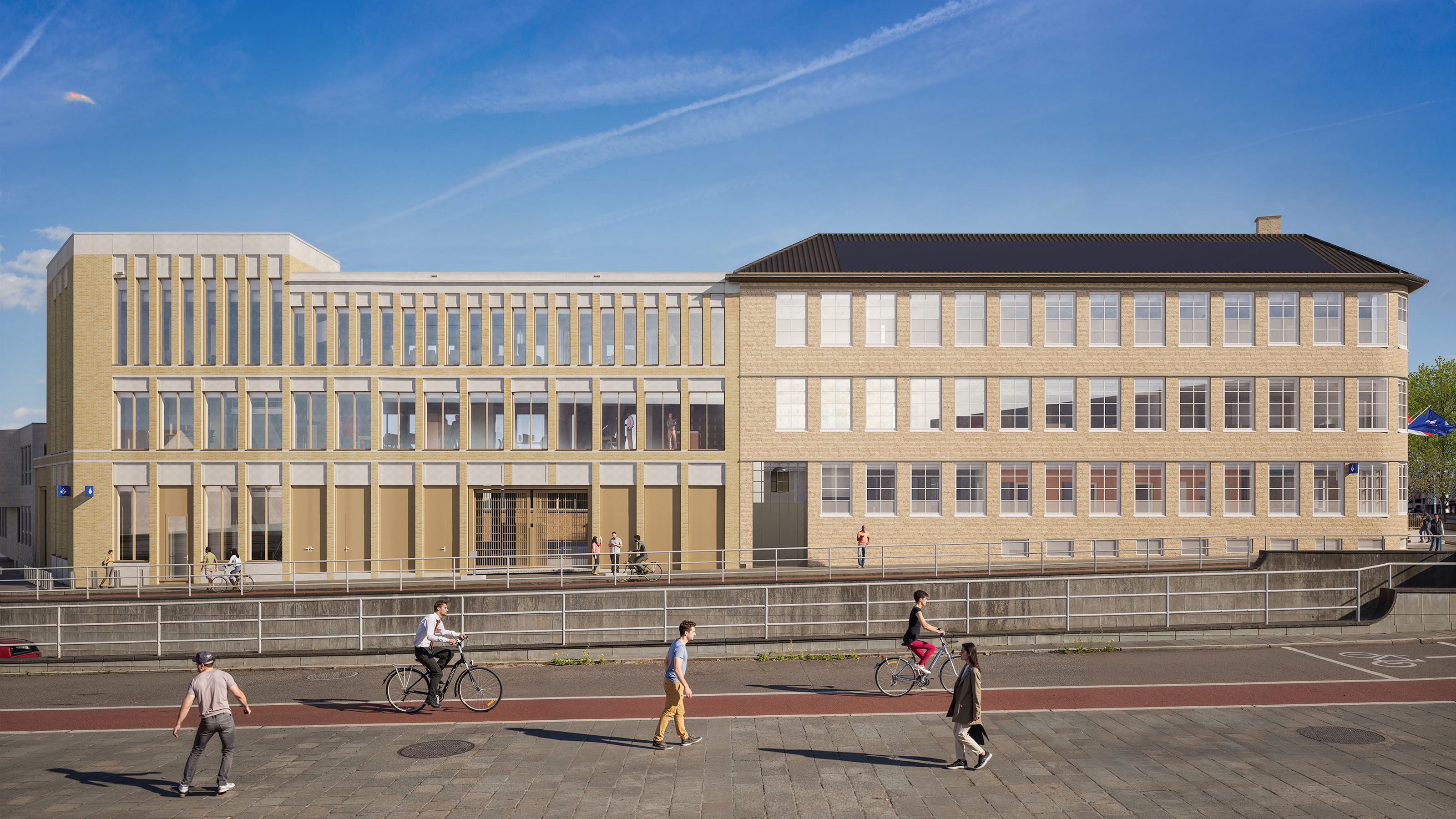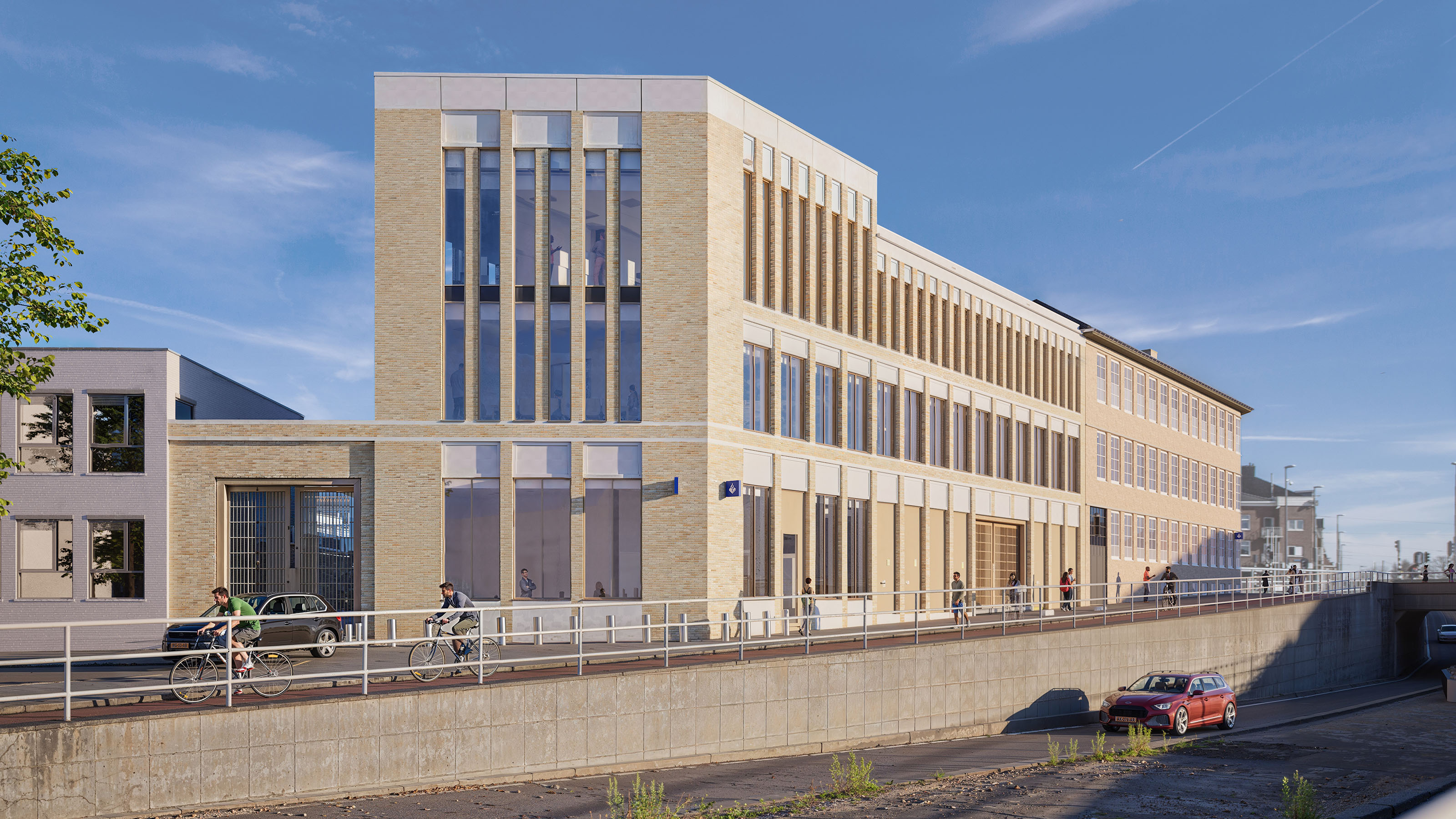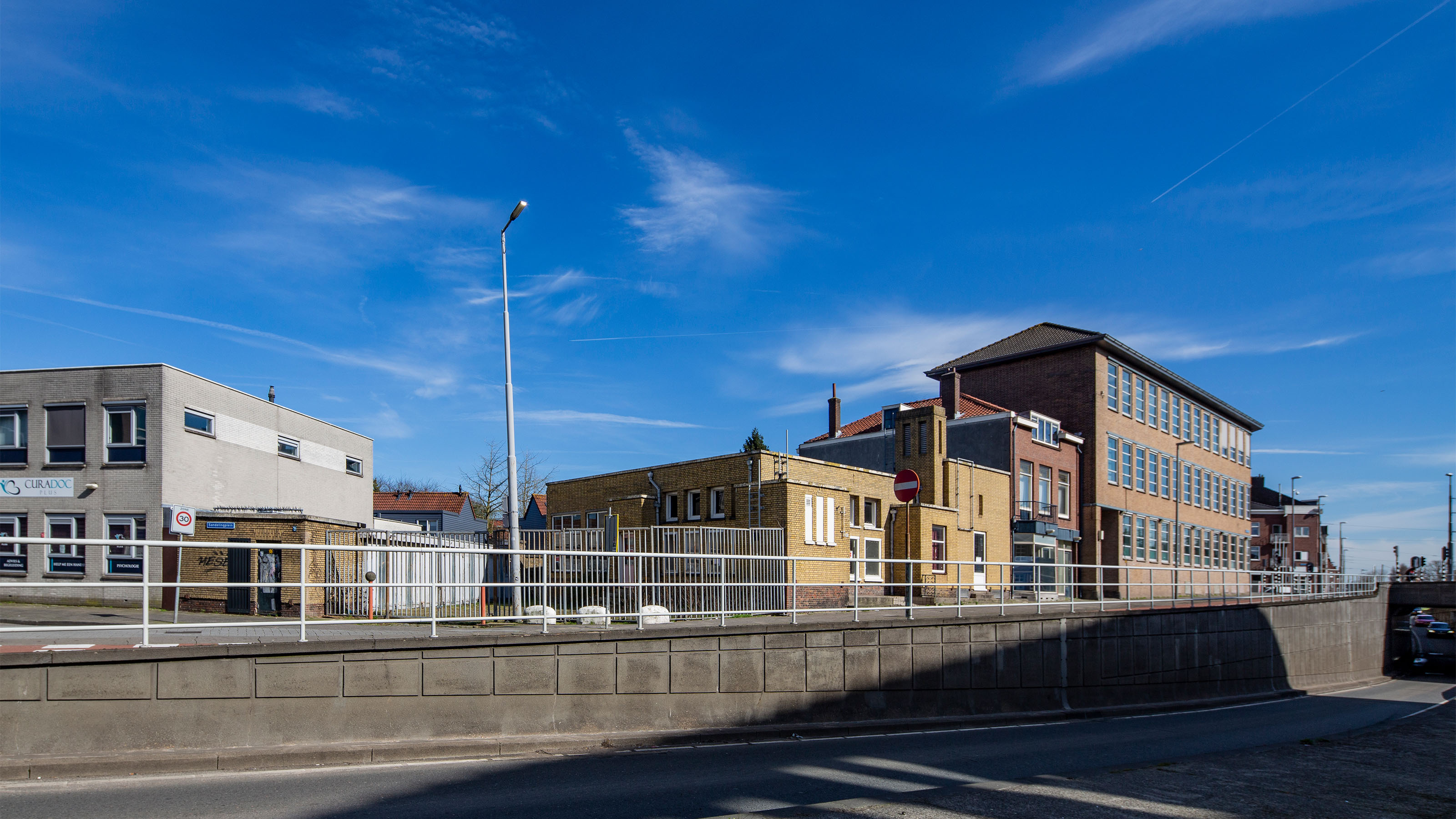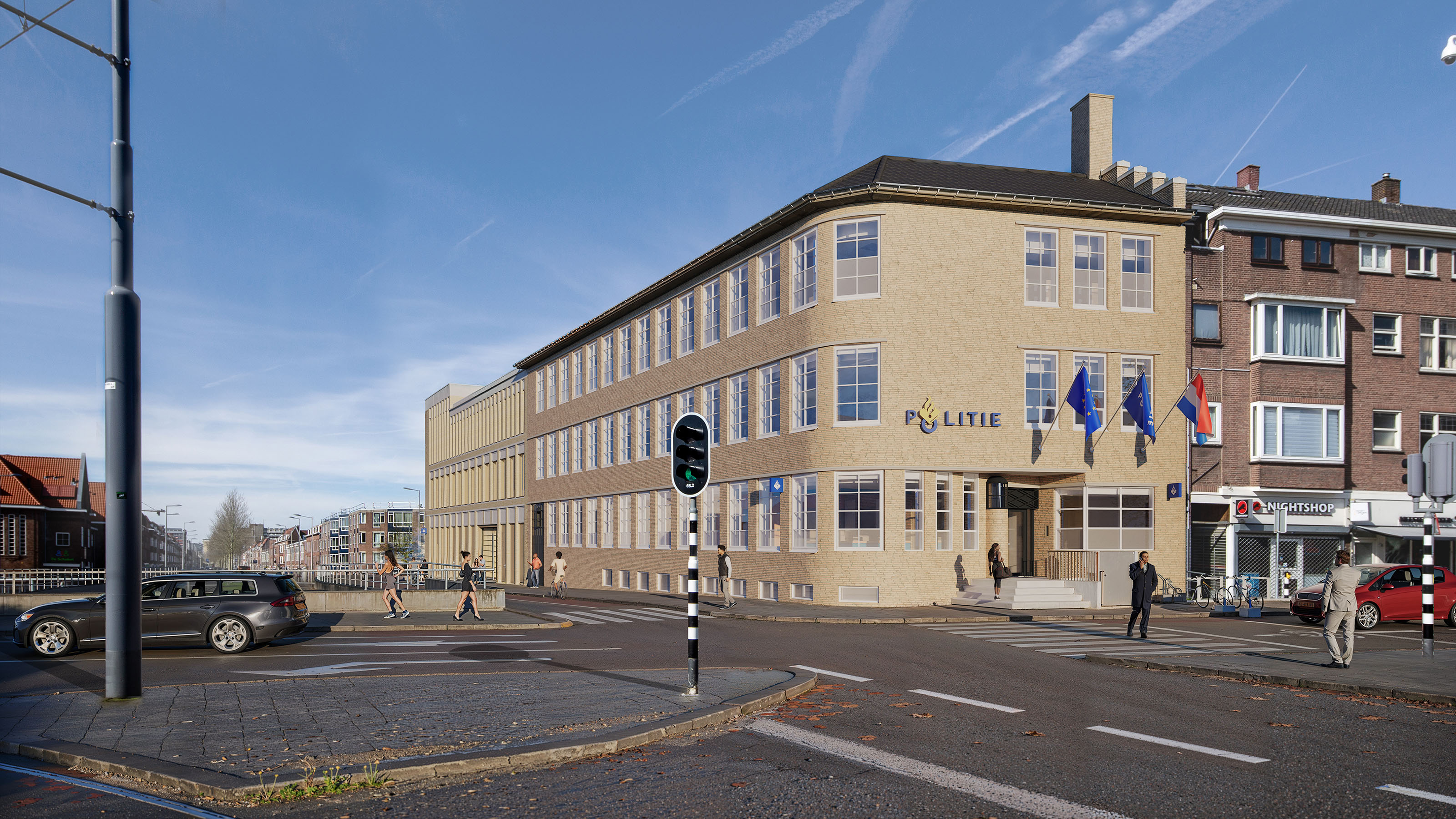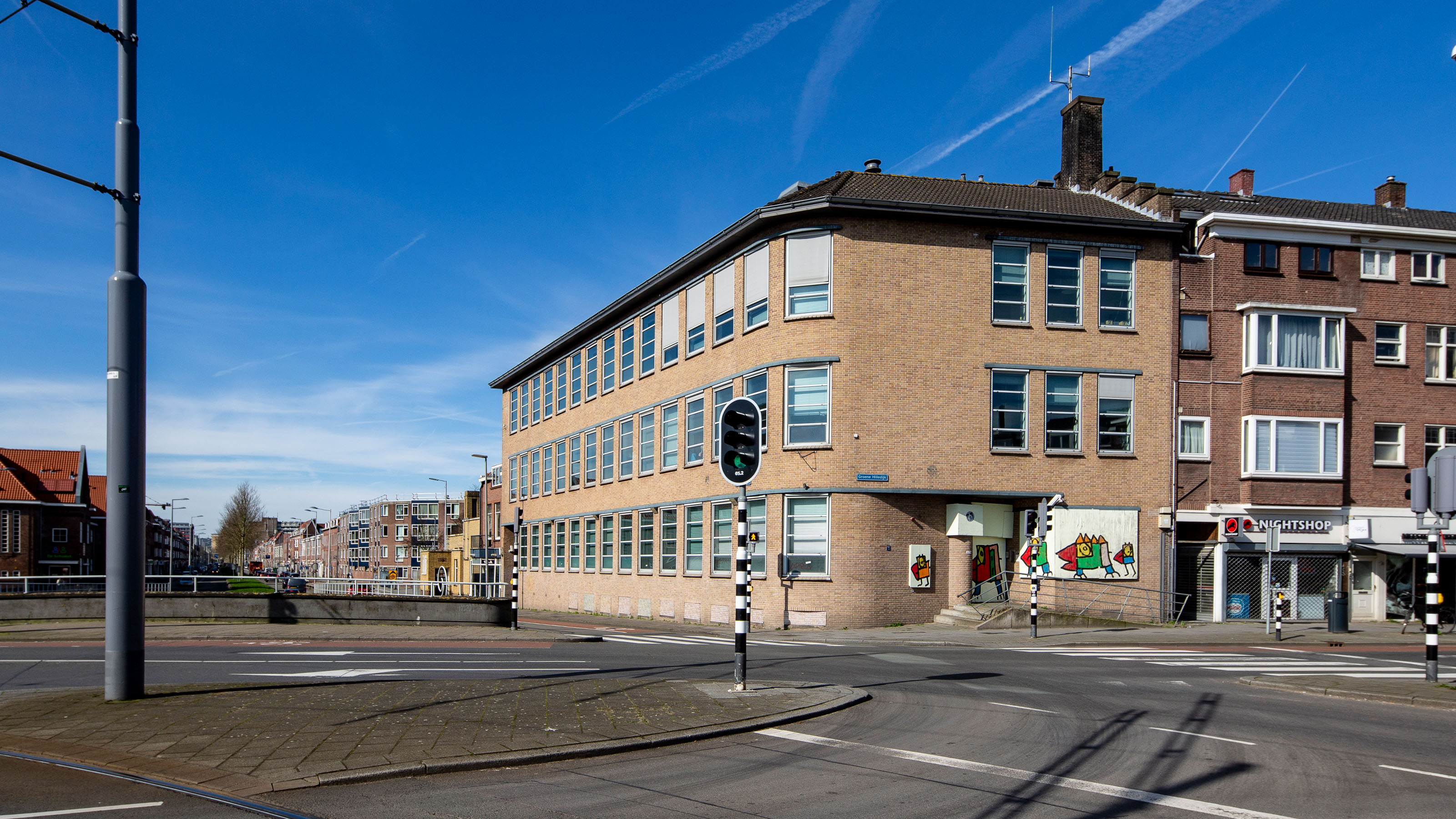Through a renovation and sympathetic new build, the landmark building will regain its community function
Open and accessible to local residents
The Feijenoord (a neighbourhood in Rotterdam) core police team is leaving the Maashaven in Rotterdam and will move into the old police station on Groene Hilledijk. The structure was originally built as a police station in 1936 and, as part of a Total Engineering contract, will be renovated and extended with a new volume on Sandelingplein.
Police visibility in the city
The police is working hard to raise its visibility in neighbourhoods. With the reopening of the renovated and extended police station, Bloemhof will have a neighbourhood station again. Clearly visible at the intersection of Groene Hilledijk and Strevelsweg, the distinctive structure is set to be renovated and extended. The extension reinterprets the design language of the landmark building from the 1930s. The combination of old and new completes the urban block and its scale aligns with other corner developments on Strevelsweg. The new building will have a distinctive contemporary appearance. The building designed by EGM enlivens will also house a community workspace and enlivens Sandelingplein.
The complex comprises three storeys, with offices on the first and second floors. Old and new are closely aligned, in the facade and building line and the carefully chosen materials. The new extension, whose colour and rhythm acknowledge the existing building, will be a contemporary reimagination of the existing building. This reflects the Rotterdam tradition of maintaining what exists and developing new qualities. On this busy inner city location space for police vehicles and bikes on site is provided, safe and hidden from view.
Delightful workplace
The station will soon house the core police team for the Feijenoord district. The public area on Groene Hilledijk has been made recognisable at the corner of the existing building. The community space on the corner of Sandelingplein is intended for stakeholders. As a result, the building is open and accessible for local residents. Located behind the public area and on the upper floors are the staff working areas that are not public. A flexible floor plan offers space for both individual and group work. Based on the concept of ‘bustle, noise and quiet’, the building offers a variety of spaces for interaction and working together. The route from the existing volume to the new wing links the floors in a functional and inviting way. The welcoming stairs stimulate staff to interact and move around.
Sustainable
The existing building dates from the 1930s and needs an upgrade to house a future-proof police station. With sustainability in mind, the design limits energy consumption with the application of insulation and new windows with triple glazing. The building will not be connected to the gas supply and will operate fully electrically, thanks in part to the large number of PV panels on the roofs. Flat rooftops are covered in greenery and along with the site will be used to store rainwater. The new building is designed with maximum flexibility in order to allow to be rearranged in the future.
Social core
The building strengthens connections and interaction within the organisation, facilitates social cohesion, and also offers functionally designed spaces where staff can work in peace. The social heart of the complex is located where old and new meet. A void links the first and second floors. Flights of stairs connect all levels and bring staff together in the ‘living room’ of the building. The briefing area and staff restaurant are also positioned near this social heart.
All work areas are designed to be equal to allow for future flexibility. This allows for possible changes when the building is in use. The public area is positioned on Groene Hilledijk, on the ground floor of the existing building.
Total Engineering
The Total Engineering team is headed by EGM architects and consists of Valstar Simonis, Wolf Dikken and Aronsohn, will be working on the Feijenoord Team Office. The integral Total Engineering approach, in combination with BIM, makes life easier for the police organisation during all phases of the project. EGM architects, as a full-service architecture office, has extensive experience with this form of collaboration. This results in an integral design that aligns seamlessly with the wishes and requirements of the police.
Team
EGM architects: Ádám Petróczki, Alwin Nortier, André van Die, Arie Meijboom, Arno van Schaik, Bram Spoor, Dennis Slijkoord, Francesco Catanese, Heidi Sairanen, Ines Anic, Leo Visser, Michal Siupik, Peter van Ek, Stefan de Kruijf
Partners: Aronsohn, Valstar Simonis, Wolf Dikken
